Our bearded dragon Animal Ambassador, Loki, was rescued through Archie’s Angels, a reptile rescue based in Green Bay. Circulation Supervisor Kelsey Butterfield was the driving force behind him joining the Library family. She contacted Archie’s Angels thinking he would be a great fit for the Library’s newly created Animal Ambassador position. He arrived at the Library on July 25, 2021, and he quickly settled into his new home. Generous support from the Friends of the Library made the addition of an Animal Ambassador to the Library team possible.
He is very mild-mannered and loves to observe everything going on around him. When he smiles, you can’t help but smile back!
Loki fills an important role at the Library. He provides patrons and staff something more to look forward to when they come to the Library. Many times you will see him entertaining visitors from his enclosure, sharing fun facts about bearded dragons, or attending Library events.
In his free time, he enjoys sleeping on his favorite rock, snuggling with staff, basking under his lamp or in the sun, eating roaches or hornworms, and soaking in a warm bath.
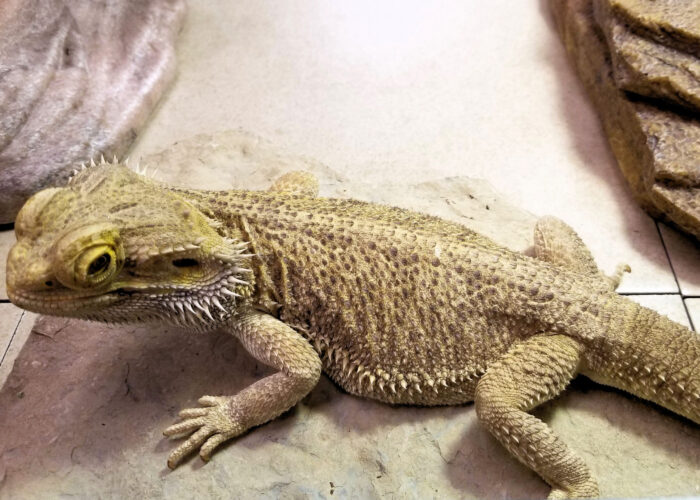

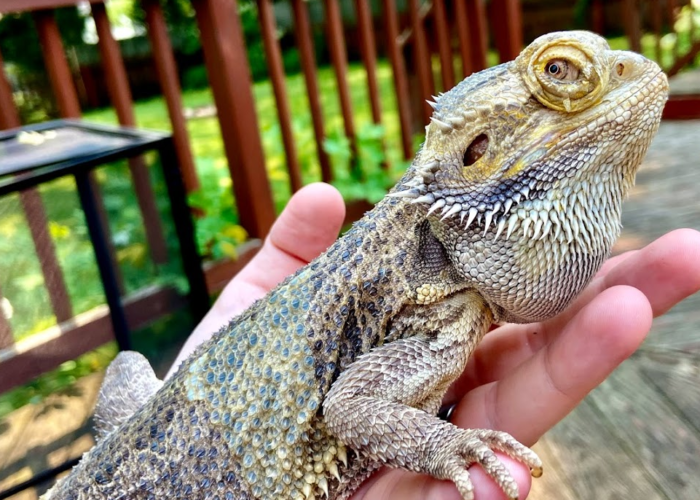
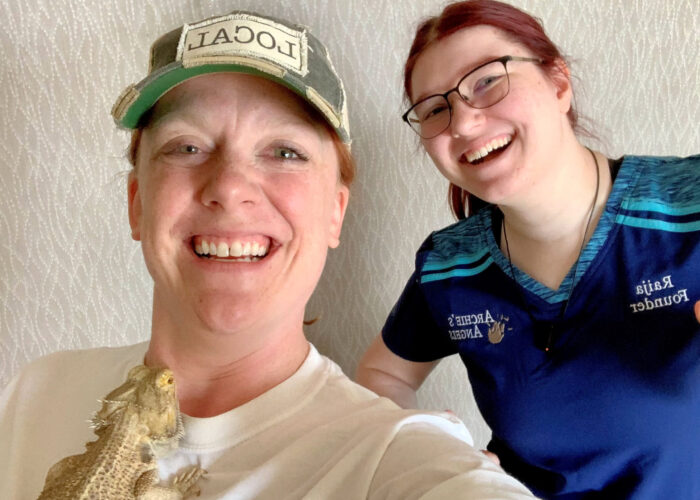
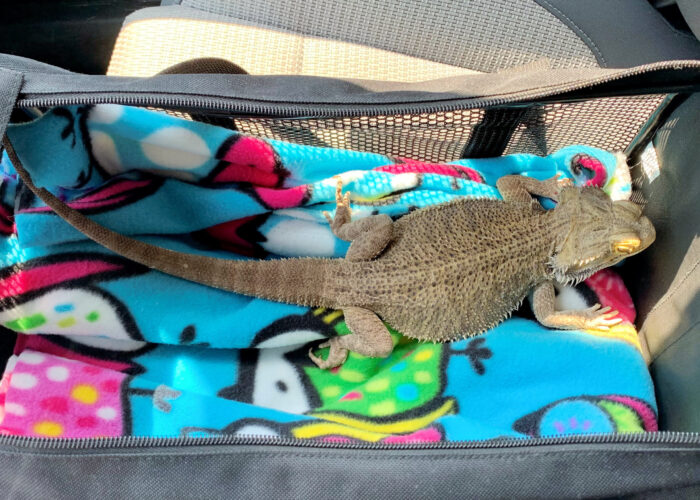
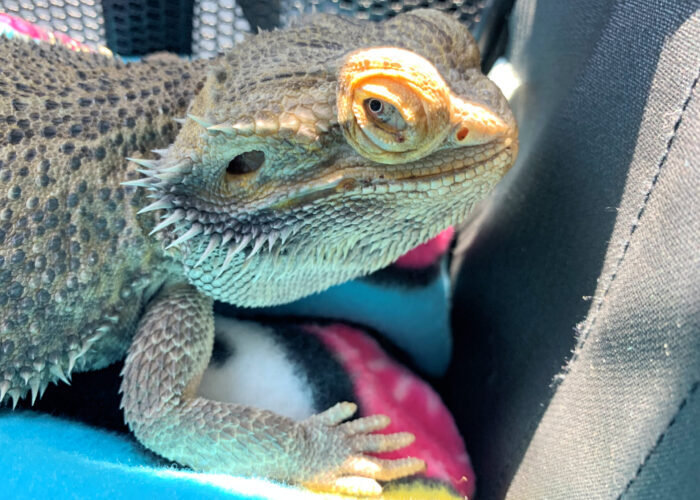
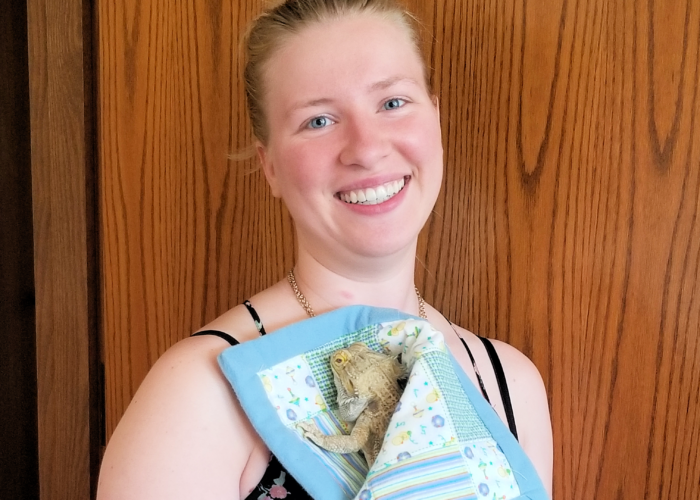
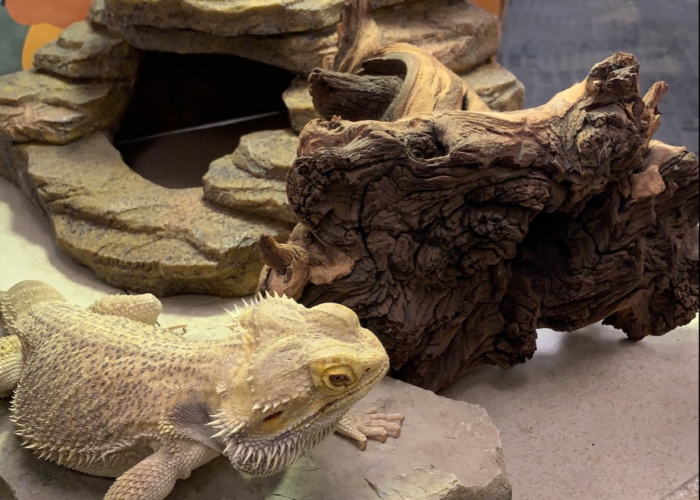
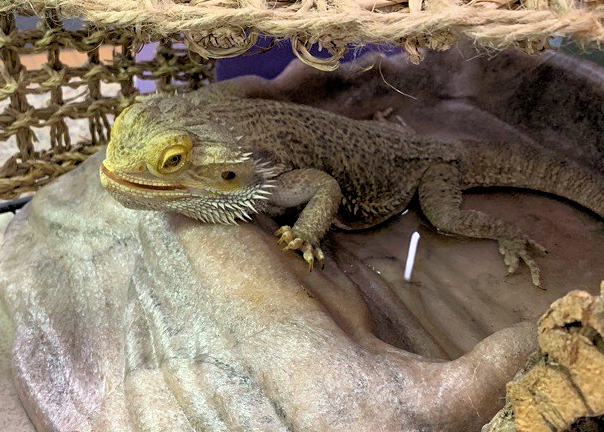
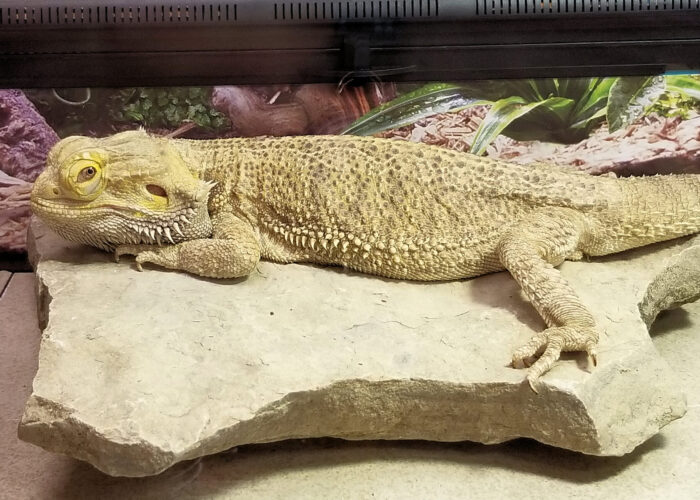
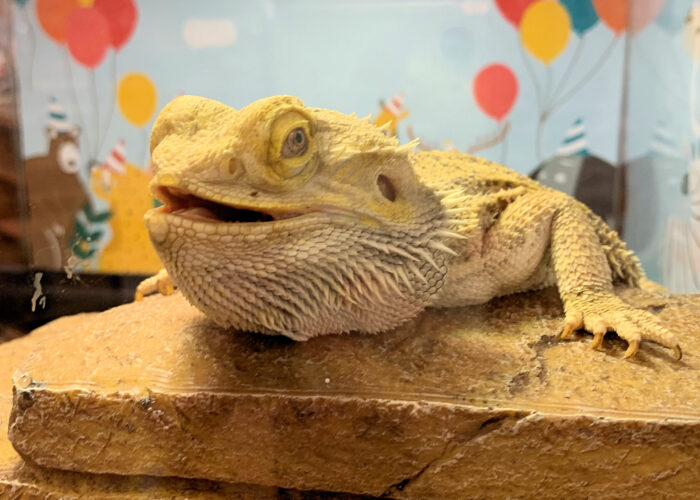
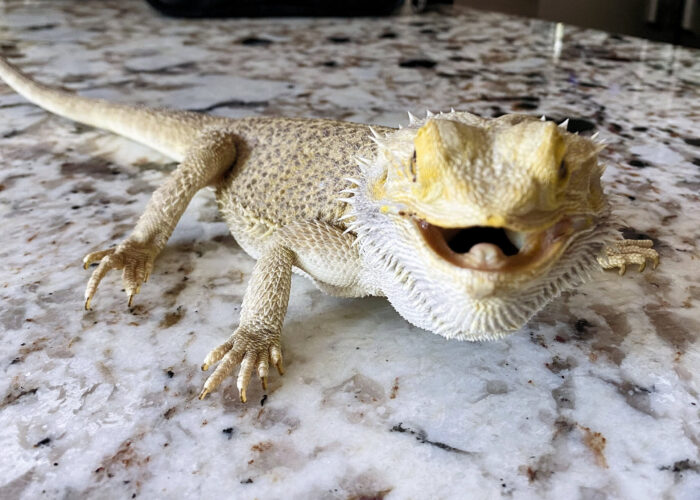
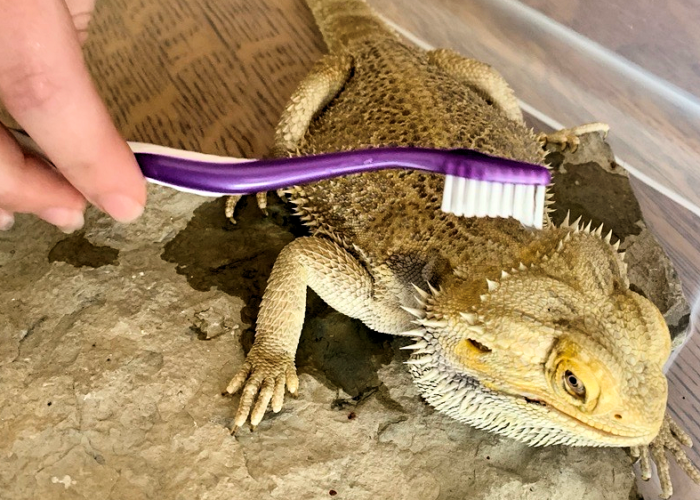
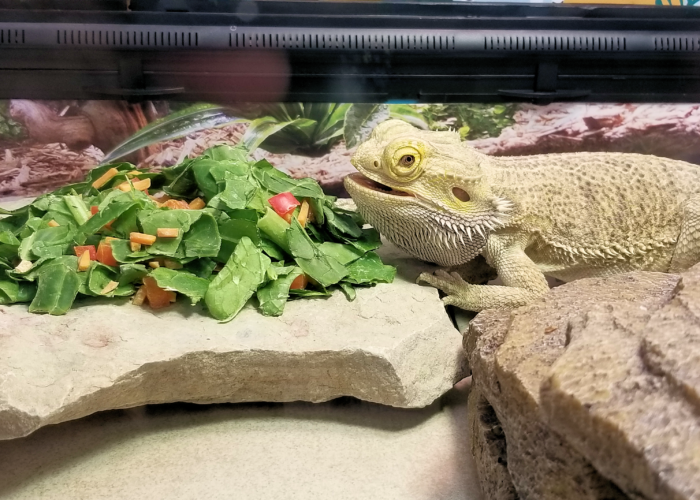
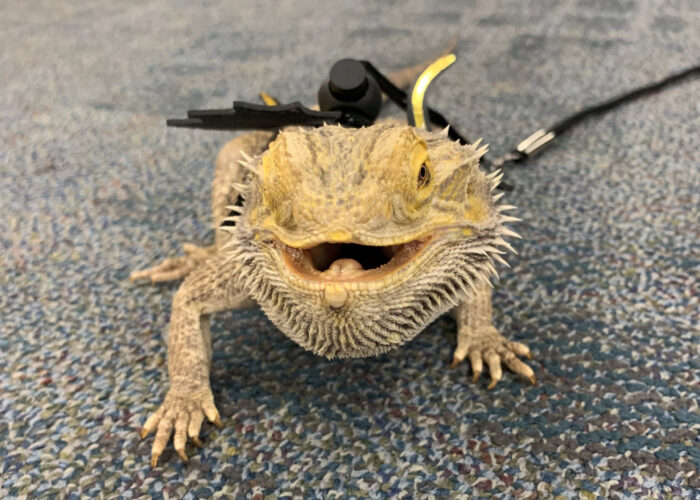
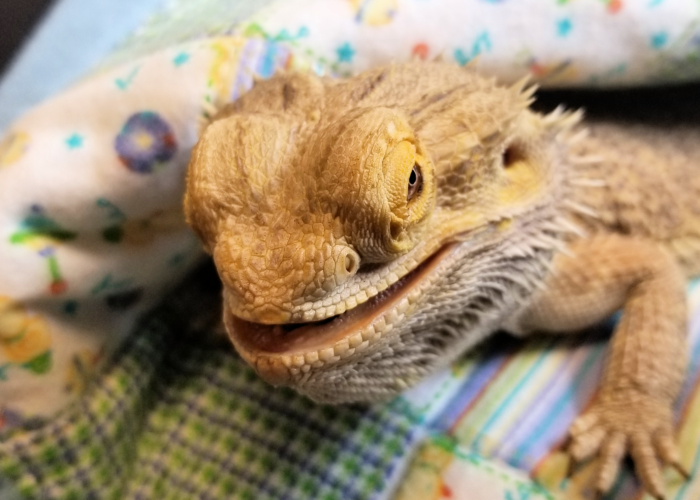
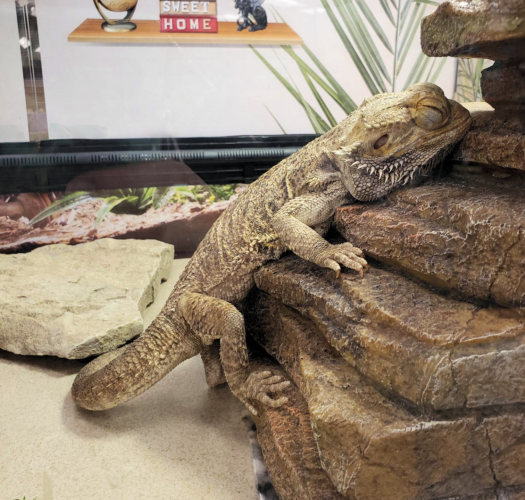
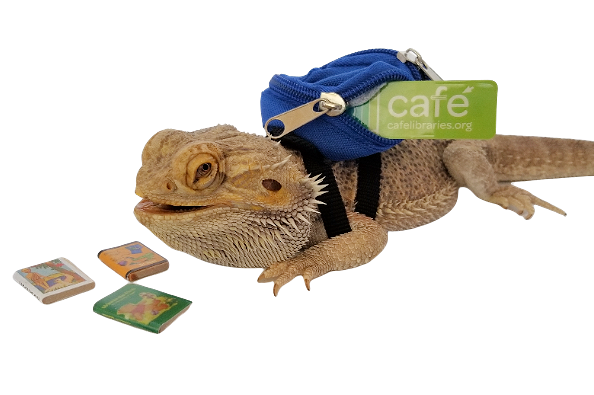
 Our dragon was rescued through Archie’s Angels, based in Green Bay. When our beardie arrived at Archie’s Angels, he had a respiratory infection and Metabolic Bone Disease (MBD). He overcame his respiratory infection, though it left him with scar tissue that sometimes causes him to make a raspy croaking sound when he breathes. His MBD, on the other hand, will always be with him. It causes his mouth to hang open sometimes, giving the rather sweet illusion that he is smiling. He loves to eat. He has salad every day, and his favorite proteins are live crickets and roaches. While we don’t know exactly how old he is, a veterinarian estimates he is about 3 or 4 years old.
Our dragon was rescued through Archie’s Angels, based in Green Bay. When our beardie arrived at Archie’s Angels, he had a respiratory infection and Metabolic Bone Disease (MBD). He overcame his respiratory infection, though it left him with scar tissue that sometimes causes him to make a raspy croaking sound when he breathes. His MBD, on the other hand, will always be with him. It causes his mouth to hang open sometimes, giving the rather sweet illusion that he is smiling. He loves to eat. He has salad every day, and his favorite proteins are live crickets and roaches. While we don’t know exactly how old he is, a veterinarian estimates he is about 3 or 4 years old.
The bearded dragon is native to Australia. They live in woodlands, savannahs, and deserts. They are semiarboreal, meaning they spend some of their time in trees and some on the ground. You can find them basking in branches, on stumps, or on rocks. Bearded dragons were first brought to the United States in the 1990s and have since become popular pets.
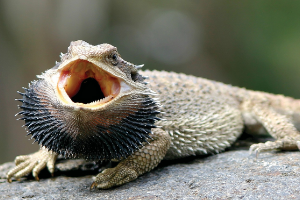 The bearded dragon’s scientific name is Pogona Vitticeps. They are sometimes called Beardies for short.
The bearded dragon’s scientific name is Pogona Vitticeps. They are sometimes called Beardies for short.
Bearded dragons have spikes and scales around their head that look like a beard when puffed out. When they feel threatened or excited, they puff out their “beard,” flatten their belly, and open their mouth to make themselves look bigger.
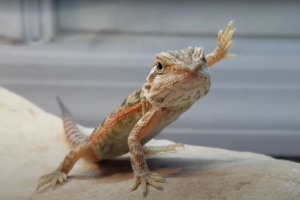
Bearded dragons make great pets! They are easy-going and relaxed. They are one of the most popular pet lizards in the world. Bearded dragons enjoy being handled and pet. They can walk on a leash and will even let you dress them in clothing. Beardies can recognize their owners and show love. They communicate by bobbing their head, waving, or changing color.
Bearded dragons can live 10-12 years if they are well taken care of.
 Bearded dragons are medium-sized lizards that can grow from 12-14 inches long from head to tail. Their tail is approximately half the length of their body.
Bearded dragons are medium-sized lizards that can grow from 12-14 inches long from head to tail. Their tail is approximately half the length of their body.
Baby beardies are very small when freshly hatched—typically only three or four inches and only weigh two grams—as much as five paperclips.
Male bearded dragons have a wider head and darker beard than that of the female. Females have a thinner and longer tail in contrast to males. The most accurate way to determine your bearded dragon’s sex is by looking at its underside to see if you can recognize any gender-specific body parts.
 Bearded dragons are omnivores—they eat fruits, vegetables, and insects. They get most of their water from the plants and vegetables they eat, soaking in water, and from misting.
Bearded dragons are omnivores—they eat fruits, vegetables, and insects. They get most of their water from the plants and vegetables they eat, soaking in water, and from misting.
 Bearded dragons are diurnal—they are awake during the day and sleep at night.
Bearded dragons are diurnal—they are awake during the day and sleep at night.
Oconomowoc Public Library
200 W. South St.
Oconomowoc, WI 53066
(262) 569-2193
contactus@oconomowoclibrary.org
The Oconomowoc Public Library’s staff, collections, services, and spaces provide the opportunity for our diverse community to explore, discover, learn, and grow, enriching individual lives and our community.
Search The Website